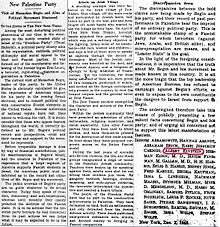Bruria Kaufman

Bruria Kaufman (August 21, 1918 – January 7, 2010) was an Israeli theoretical physicist. She is known for contributions to Albert Einstein's general theory of relativity, to statistical physics, where she used applied spinor analysis to rederive the result of Lars Onsager on the partition function of the two-dimensional Ising Model, and to the study of the Mössbauer effect, on which she collaborated with John von Neumann and Harry Lipkin.
Biography

Bruria Kaufman was born in New York City to a Jewish family of Russian origin. In 1926 the family immigrated to the British Mandate for Palestine, living first in Tel Aviv, and then in Jerusalem. Her main interests during her youth were music and mathematics.[1]
She studied mathematics, earning a B.Sc. from Hebrew University of Jerusalem in 1938, and a PhD from Columbia University in 1948. She married the linguist Zellig S. Harris in 1941.
In 1960, she settled on Kibbutz Mishmar Ha'emek and adopted a daughter, Tamar.[2]
Kaufman returned to the US in 1982. They lived in Pennsylvania, where her husband taught. He died in 1992. Kaufman moved to Arizona and married the Nobel laureate Willis Eugene Lamb in 1996, although the marriage ended in divorce. She died in January 2010 at Carmel Hospital in Haifa, following a stay at a nursing home in Kiryat Tiv'on, not far from Haifa. In keeping with her wishes, her body was cremated.[3]
Scientific career
Kaufman was a research associate at the Institute for Advanced Study in Princeton from 1948 to 1955, where she worked with John von Neumann (1947/48) and with Albert Einstein (1950–1955). She spent the following years at the University of Pennsylvania working on a mathematical linguistics project.
Kaufman returned to Israel in 1960 (with Harris) where she became professor at the Weizmann Institute of Science in Rehovot (1960–1971) and later on at the University of Haifa (1972–1988).
Selected publications
- "Crystal Statistics. II. Partition Function Evaluated by Spinor Analysis", Phys. Rev. 76: 1232 (1949).
- "Crystal Statistics. III. Short-Range Order in a Binary Ising Lattice", Phys. Rev. 76: 1244 (1949), with L. Onsager.
- "Transition Points", Physical Society Cambridge International Conference on Low Temperatures (1946), with L. Onsager.
- The Meaning of Relativity with A. Einstein and E. G. Strauss, Princeton University Press (1953).
- "Algebraic Properties of the Field in the Relativistic Theory of the Asymmetric Field", Annals of Mathematics 59: 230–244 (1954), with A. Einstein.
- "A New Form of the General Relativistic Field Equations", Annals of Mathematics 62: 128–138 (1955), with A. Einstein.
- "Mathematical Structure of the Non-symmetric Field Theory", Proceedings of the Fiftieth Anniversary Conference on Relativity 227–238 (1955).
- "Neighbor Interactions and Symmetric Properties of Polyelectrolytes", Journal of Chemical Physics 27: 1356–1362 (1957), with S. Lifson and H. Lifson.
- "The Stability of a Rotating Viscous Jet", Applied Mathematics Quarterly 19: 301–308 (1962), with J. Gillis.
- "Momentum Transfer to Atoms Bound in a Crystal", Annals of Physics 18:249–309 (1962), with H.J. Lipkin.
- "Unitary Symmetry of Oscillators and the Talmi Transformation", Journal of Mathematical Physics 6: 142–152 (1965), with C.C. Noack.
- "Special Functions of Mathematical Physics from the Viewpoint of Lie Algebra", Journal of Mathematical Physics 7: 447–457 (1966).[4]
References
- ↑ "Bruria Kaufman-Harris: physicist who worked with Albert Einstein". Times Online. March 3, 2010.(subscription required)
- ↑ Dromi, Uri (January 15, 2010). אחרי מות | פרופ' ברוריה קופמן הריס [Obituary: Professor Bruria Kaufman Harris]. Haaretz (in Hebrew).
- ↑ Memorial webpage (Hebrew)
- ↑ "Bruria Kaufman". CWP at UCLA.